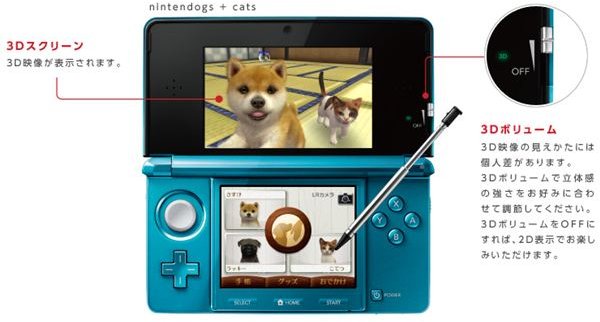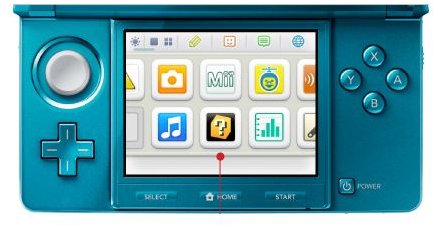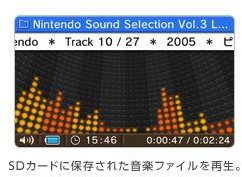True Glasses-Free 3D

Getting Passed the Gimmick
When you first pick up a 3DS and turn on its 3D display, a lot of things will hit you all at once. Maybe discomfort, a lot of confusion, possibly a small headache; passed all of that, however, you’ll feel it. It starts small, but once you catch that first glimpse of true 3D without glasses, the magic grows. Characters pop out at you, landscapes fall back into the screen, and everything becomes just a little bit more real. Almost as if you could reach into the system and touch the various monsters or trees that preside within the game worlds.
It’s the Nintendo 3DS, the latest handheld gaming device from the long-standing company, and its here to bring the innovation, whether you’re ready for it or not.
Graphical Quality of the 3D Display

A full explanation of how any of this 3D nonsense is possible would be beyond me to explain and far too complicated for anyone to really grasp without having hands on time with the hardware themselves, but in layman’s terms, here’s how it works:
The 3DS screen displays two images at once, and with a device called a “parallax barrier”, the system is able to filter it so each of your eyes can only see one of the two images. Similarly to how those old holographic cards on lunchboxes or cereal worked, the 3DS is all about tricking your brain into seeing something its not. As with any new technology, however, there is a bit of worry from parents and skeptics. Let me be the first to tell you: The 3DS cannot give you any sort of permanent eye damage.
This is great, because in most cases, once you see 3D you won’t want to go back. The menu items look crisp and smooth, things pop out at you, things fall away from you; it’s really something that you can’t really fathom until you’ve seen it for yourself. There is one problem I’ve begun to notice about it, though: In some games, turning the 3D on causes it to run slower, such as with the recently released Dead or Alive: Dimensions, which runs at 60 frames per second with the 3D effect off, but 30 frames per second with it on. Still, this is not so much a complaint about the hardware as a complaint about developer’s use of it, and most games shouldn’t see issue.
Bottom Line? 9/10
Beyond 3D - Graphical Quality

So, the 3D is cool- magical, even- but what about the raw graphics? Does it have the power to run our favorite games? The answer to this is yes and no. While the 3DS is the most powerful handheld on the market today, it’s no Playstation 3. The hardware could be considered slightly more powerful than the Nintendo Wii (it has some more advanced lighting effects), and ultimately this is incredibly impressive given the size of the screen, but at the end of the day it’s no powerhouse console like the things we may be used to.
Still, launch games look awfully impressive, and what’s to come looks like it’ll only improve on what we’ve seen. Games like Resident Evil: Revelations and Metal Gear Solid 3D are showing us that we’ve yet to see the extent to which the 3DS’s graphics can be pushed.
Bottom Line? 8/10
Pricing

The 3DS retails for $249.99, which is equal to the Nintendo Wii when it first came out. Whether or not this is worth it for you will depend on whether you answer “No” to any of the following questions:
- Do you have a DS, DS Lite, DSi, or DSi XL?
- Do you find the launch line-up to be lackluster?
- Do you often find yourself disliking Nintendo console?
If you answered “No” to any of these, you should probably pick up a 3DS as it will be well worth the price, especially if you factor in its ability to play old DS games, and the upcoming free interenet browser and online store.
Bottom Line? 9/10
Physical Construction

Simultaneously the biggest complaint and the biggest improvement of the Nintendo 3DS comes from how the system itself is constucted. The start, buttons feel fantastic with just the right amount of click and stick, and everything feels tightly compact, as if I could drop is multiple times with no consequence. (Author’s Note: Don’t drop your 3DS) The best part about this new construction is the inclusion of a new analog “nub”, slightly similar to the one found on the PSP, only leaps and bounds better. By far the best iteration of the analog stick ever created, it’s the smoothest, sleekest, most comfortable thing on the device. Assuming it doesn’t break within the next few months, I hope all systems use these from now on.
However, I do have one complaint regarding the construction. The hinges on the device feel a little floppy, and while they haven’t gotten any more floppy as I’ve played the system longer and longer, it does worry me that we will have another DS-Phat situation on our hands, where the hinges succeed in breaking completely.
Bottom Line? 8/10
Sound and Speakers

Let’s just admit it: Handheld gaming devices have never really had the best speakers ever. Rarely can they produce full quality sound that sounds like it’s coming anywhere except from the small speaker on the console, and this has worked just fine for the most part. The 3DS, however, turns this preconception upside down, and I’ll simply tell you one short story to convince you.
I was playing on the 3DS menu, messing with options and scrolling through thing, when I clicked on something. The subsequent sound effects were nice, and things were surprisingly spread out for coming from two small speakers on something the size of a Pop-Tart, but then I heard a short beep from behind me and turned around to check it out. After a few more random beeps, I noticed something: The sounds were coming from my 3DS. Those two tiny speakers actually had made a sound seemingly come from behind me, despite the fact that the system was directly in front of me.
Needless to say, that’s a bit of a revelation, and I have no idea how they did it, but boy am I glad they did.
Bottom Line? 9/10
To Buy or Not to Buy
Whether the 3DS is worth it for you at this immediate point in time is really up to you to decide, but based on the quality of the hardware and the things that it comes with, $250 is a fair asking price. It’s not great, but it’s fair. Also note that the system does come with some built in software that further increases its value (built in camera, MP3 player, etc), but I’ll get to that in a software review for another time.
If you have any questions or comments about the system, feel free to post them and I’ll respond to any concerns you may have as soon as I can!
Overall Hardware Score: 9/10
References
1. Information is all based on author experience with the Nintendo 3DS game system.
2. Images are all from Austin’s other review of the Nintendo 3DS, located here, and from here.
